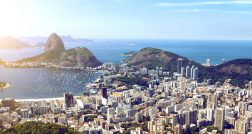3 At-Risk Destinations Travelers Want to See Now
Cuba, Venice and the Great Barrier Reef face serious changes.
Many travelers are seeking out destinations threatened by social or environmental factors, according to the 2017 Virtuoso Luxe Report. Below are three endangered places attracting visitors and the efforts being made to address these problems.
Cuba
An influx of tourists after a 50-year ban may be permanently changing the island’s character—a concern that is ironically contributing to the problem, since travelers want to go before today’s Cuba disappears completely. According to the country’s tourism ministry, a record four million foreigners visited in 2016, most from North America and Europe. “I met tourists from around the world,” says Hannah Lott-Schwartz, an Endless Vacation® magazine contributor who visited in May 2016. “There was a sense that the country’s essence was somehow under threat of change—a threat given that tourism is driven by the aspect of untouched island life, completely distinct from any other Caribbean nation.” The Havana airport is expanding to meet demand, and the government is increasing investments in projects such as hotel construction; Lott-Schwartz noted at least four new hotels being built in the main Havana corridor during her trip.
Venice, Italy
The UNESCO World Heritage site has been sinking for centuries, but recently severe flooding has sped up the process, compromising buildings and walkways. In addition, up to 90,000 tourists crowd Venice daily, outnumbering its 55,000 permanent residents and straining its infrastructure. “The first thing visitors can do to help the city would be to have respect for the local people,” says Andrea Grisdale, CEO of IC Bellagio, an Italy destination management company, “and respect that they are in a historical art city.” She recommends visitors not swim in the Grand Canal or obstruct narrow streets and alleyways. UNESCO aims to ease the pressure by drawing travelers to the nearby cities in the lagoon boundary area, such as Padua and Treviso—so these may be the next hot spots. Initiatives to help preserve Venice include mobile floodgates, which temporarily isolate the lagoon from the Adriatic Sea to reduce the level of the tides.
Australia’s Great Barrier Reef
“Like all reefs in the world, the Great Barrier Reef is facing pressures,” says Fred Nucifora, director of tourism and stewardship of the Great Barrier Reef Marine Park Authority. Those pressures include coastal development, illegal fishing, pollution from runoff, and rising water temperatures from climate change. “Resorts can contribute to the reef’s health by providing up-to-date zoning information and encouraging visitors to enjoy activities on the reef in a sustainable way,” Nucifora says. Disposing of litter appropriately and not walking or anchoring on coral are some of the ways to help preserve the destination.
Image credit: iStockphoto




